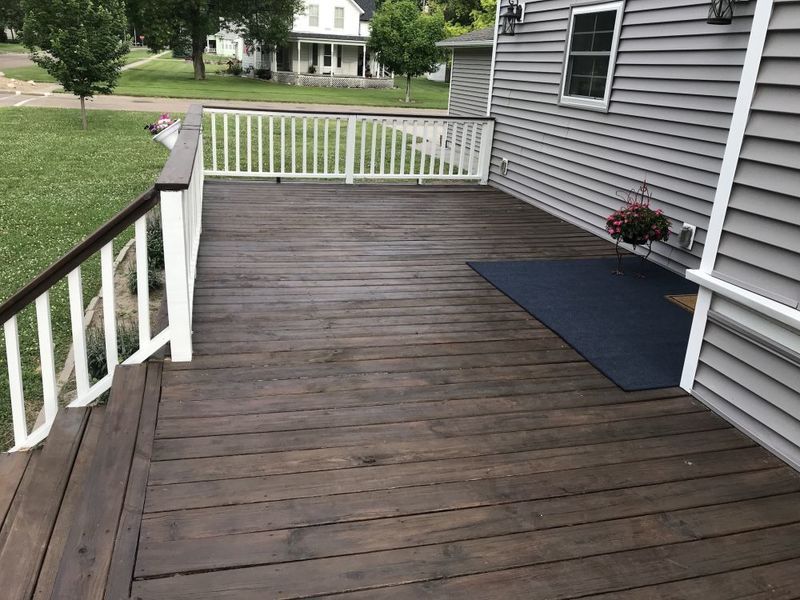Maintain and Safeguard: Release the Power of Fence Staining
Wiki Article
Choosing the Right Stain for Your Fencing: Tips and Factors To Consider
When it comes to keeping and boosting the look of your fencing, picking the best discolor is important. With a wide array of options offered, it can be overwhelming to identify which tarnish will certainly finest match your requirements. This overview will offer you with ideas and considerations to aid you make an educated decision. We will discover the different sorts of fence spots, variables to think about prior to picking a discolor, pointers for preparing your fence for staining, and the distinctions in between water-based and oil-based stains. Furthermore, we will certainly explore picking the best tarnish shade to complement your fence and improve your exterior room. By complying with these standards, you can ensure that your fence stays safeguarded and aesthetically pleasing for many years to come.Recognizing Various Sorts Of Fence Stains

On the other hand, water-based stains are made from acrylic or latex and supply an extra refined color to the timber. They produce a protective film externally of the wood, avoiding dampness from permeating in and protecting versus UV damage. Water-based spots are easier to cleanse up and have a faster drying out time compared to oil-based discolorations. They are likewise much less likely to fade or fracture in time.
Choosing between water-based and oil-based spots depends on different aspects, consisting of individual choice, the preferred appearance, and the degree of maintenance required. Oil-based spots are recommended for fence high-traffic areas or those regularly revealed to extreme weather conditions. deck staining. Water-based discolorations, on the other hand, are a popular choice for fencings in residential areas where appearance and ease of usage are crucial
When selecting the ideal discolor for their fence,Understanding the differences in between oil-based and water-based spots assists homeowners make a notified decision. Considering the certain demands of the fencing, such as its area, exposure to sunlight, and preferred aesthetic, will certainly ensure that the picked stain gives durable defense and improves the overall elegance of the fencing.
Variables to Take Into Consideration Prior To Selecting a Stain

Different kinds of timber take in spots in a different way, resulting in differing degrees of shade strength and resilience. In addition, certain timbers may be extra susceptible to concerns like rot or insect infestation, which might affect the option of tarnish to protect the fencing and secure.
The climate and weather condition problems in your location should additionally be taken into consideration. If you live in a location with rough winters months or high humidity, you may require a tarnish that gives added security against wetness and UV rays. Also, if your fence is revealed to guide sunshine for long periods, a discolor with UV preventions can assist stop fading and discoloration.
Lastly, it's vital to consider your preferred visual. Various spots offer various colors and finishes, allowing you to customize the look of your fence (fence staining and sealing). Take into consideration the general design and style of your property, in addition to any regional guidelines or property owner association standards that may determine the acceptable stain colors
Tips for Preparing Your Fencing for Staining
To prepare your fence for staining, start by extensively cleaning up the surface utilizing a moderate detergent and a pressure washer or scrub brush. Cleaning up the fence is an important action as it gets rid of dirt, gunk, and any previous finishes that might conflict with the discoloration procedure. Begin by moistening the fencing with water and afterwards use a light detergent making use of a scrub brush or a pressure washing machine with a low-pressure setting. Scrub the surface area gently, paying extra attention to locations with stubborn discolorations or mold and mildew. Rinse the fence extensively with clean water to eliminate all traces of detergent.After cleansing, enable the fence to dry completely. deck staining. This step is crucial as tarnishing a damp or wet surface can result in inadequate adhesion and an irregular finish. Relying on the weather, it may take anywhere from a couple of hours to a few days for the fence to dry extensively. Make certain that the fencing is totally dry prior to continuing with the discoloration process.
Before discoloration, examine the fence for any kind of problems, such as loosened boards or nails. This item assists to open the wood pores, enabling the tarnish to penetrate much more successfully and uniformly.

Comparing Water-Based and oil-based Spots
When choosing a tarnish for your fencing, it is essential to contrast the attributes and benefits of water-based and oil-based spots. Both kinds of discolorations have their own advantages and considerations, so it is crucial to recognize the differences between them.Oil-based spots are known for their toughness and resistance to tear and wear. In addition, oil-based stains tend to last longer than water-based stains, making them a popular choice for fences.
On the various other hand, water-based discolorations are much more eco pleasant and much easier to clean up. They have a reduced VOC (volatile natural compound) web content, which indicates they launch fewer harmful fumes into the air. Water-based stains also dry quicker, permitting for a quicker application and less downtime. They might not offer the exact same degree of protection as oil-based stains, particularly in harsh climate conditions.
Ultimately, the option between oil-based and water-based stains relies on your certain needs and choices. Think about variables such as durability, ecological impact, and ease of application when making your decision. Consulting with a specialist or looking for referrals from professionals can additionally help make certain that you choose the ideal discolor for your fencing.
Selecting the Right Discoloration Color for Your Fencing
The option of an ideal stain color for your fence is a crucial aspect of boosting its aesthetic allure and complementing the general layout of your outdoor area (deck staining nashville tn). The best tarnish color can change a plain, ordinary fencing into a striking focal point that includes deepness and character to your residential or commercial propertyWhen picking a discolor shade for your fence, it is very important to take into consideration the style and design of your home. If you have a timeless or conventional design home, earthy tones such as neutrals and browns can create a warm and welcoming look. On the other hand, if you have a contemporary or contemporary home, you could take into consideration going with vibrant and vibrant colors that make a statement.
One more aspect to think about is the natural surroundings of your residential property. If you have a you can find out more whole lot of greenery, a stain color that matches the natural landscape, such as greens or crimsons, can create a natural and unified look.
Furthermore, it deserves considering the maintenance required for different stain colors. Lighter shades often tend to reveal dust and wear more easily, while darker colors can hide blemishes and call for much less constant touch-ups.
Ultimately, the choice of stain color for your fencing ought to show your individual design and choices - deck staining companies near me. Put in the time to discover different options and get in touch with with professionals if required, to make sure that you select the ideal tarnish color that improves the elegance and allure of your fence
Conclusion
In verdict, when it comes to picking the ideal discolor for your fence, it is essential to comprehend the various kinds of spots available and think about factors such as sturdiness and preferred appearance. Picking the appropriate discolor color can boost the general aesthetic appeals of your fence.We will certainly check out the different types of fence stains, variables to take into consideration before choosing a tarnish, ideas for preparing your fence for discoloration, and the differences in between oil-based and water-based stains.Differentiating between water-based and oil-based stains is critical when comprehending different types of fencing spots. Water-based spots are simpler to cleanse up and have a quicker drying out time compared to oil-based discolorations. Furthermore, oil-based discolorations tend to last longer than water-based stains, making them a preferred option for fences.
In verdict, when it comes to picking the best discolor for your fence, it is essential to recognize the various kinds of spots available and consider aspects such as toughness and desired appearance.
Report this wiki page